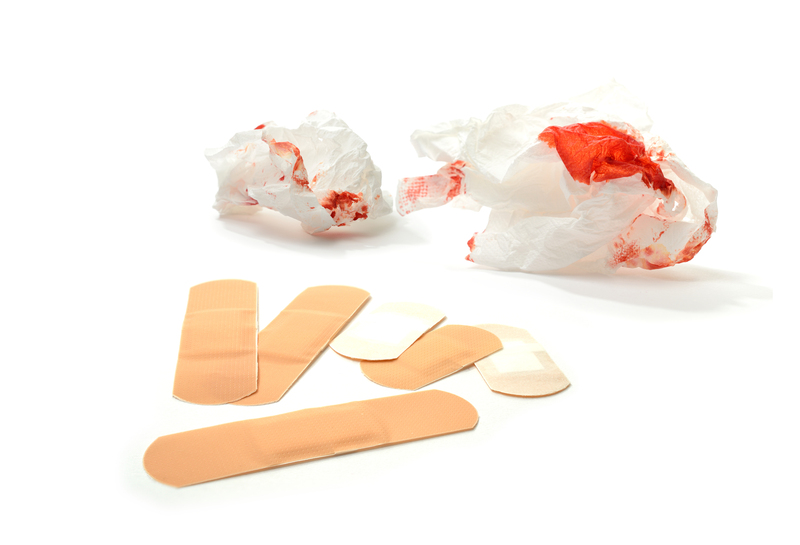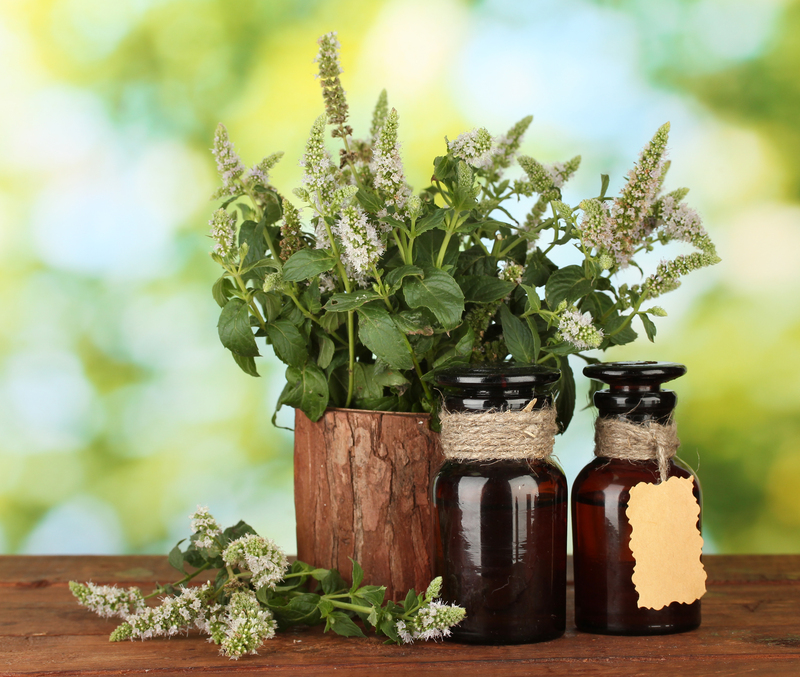Conquer Grease: Transform Enamel Trays with Simple Cleaning
Posted on 04/06/2025
Conquer Grease: Transform Enamel Trays with Simple Cleaning
Enamel trays are a kitchen staple adored for their classic beauty and incredible durability. However, with great use comes great responsibility--especially when it comes to grease build-up. Whether you're an avid baker or rely on enamel trays for your everyday cooking, you've likely struggled with stubborn, baked-on grease. Luckily, conquering grease and restoring the shine to your enamel trays is easier than you think. In this comprehensive guide, we'll walk you through everything you need to know to transform enamel trays with simple cleaning methods.

Why Grease Sticks to Enamel Trays
Before we dive into the best ways to clean enamel trays, it's essential to understand why grease is such a persistent problem. Enamelware features a smooth vitreous coating over durable metal, which protects against rust and scratches. But during cooking, especially at high temperatures, oil and fat can splatter and bake onto the surface, causing unsightly, hardened residues that seem impervious to casual washing.
The main culprits for grease build-up on enamel trays include:
- High-heat roasting and frying that splatters fat onto surfaces.
- Repeated use without deep cleaning in between sessions.
- Improper cleaning techniques--many avoid thorough scrubbing for fear of damaging the enamel finish.
This accumulation not only affects the appearance and longevity of your enamelware but can also impact the flavor of your dishes and even compromise the non-stick qualities of your trays.
Essential Supplies for Cleaning Enamel Trays
Having the right tools and products is key to winning the battle against grease. Here's what you'll need for deep cleaning enamel trays:
- Baking soda--A natural abrasive and deodorizer.
- White vinegar--Great for breaking down grease and limescale.
- Lemon juice--A natural degreaser and stain remover.
- Dish soap--Choose a concentrated, grease-cutting formula.
- Non-abrasive sponge or brush--To avoid scratching the enamel.
- Microfiber cloth--For a streak-free shine.
- Plastic scraper or silicone spatula--For tough, stuck-on bits.
- Rubber gloves--To protect your hands from hot water and detergents.
Step-by-Step Guide: How to Remove Grease from Enamel Trays
Step 1: Preparation
Begin by removing loose food particles from your tray with a gentle scrape using a plastic or silicone tool. Avoid metal utensils, as they may chip or scratch the enamelware, making it more susceptible to future stains and rust.
Step 2: Hot Soapy Soak
Fill your sink or a basin with hot water and generous squirts of your favorite grease-cutting dish soap. Submerge the enamel tray and let it soak for at least 30 minutes. This step helps to loosen the surface grease and soften any burned-on food bits.
Step 3: Baking Soda Scrub
After soaking, drain the water and sprinkle a liberal amount of baking soda on the tray's greasy areas. Baking soda acts as a gentle abrasive, safe for enamel. Using a damp non-abrasive sponge, scrub the tray in a circular motion. The combination of baking soda and mild agitation lifts away oily residue. For stubborn spots, let the baking soda sit for 10-15 minutes before scrubbing.
Step 4: Vinegar Magic
For tough, baked-on grease stains, pour white vinegar over the affected areas. The fizzing reaction between the vinegar and remaining baking soda helps to dislodge stubborn grime. Allow the mixture to bubble on the tray for 5-10 minutes before rinsing thoroughly with hot water.
Step 5: Lemon Boost
If stains persist or if you want a natural, streak-free shine, rub half a lemon over the tray, paying special attention to any sticky or greasy spots. The acids in the lemon juice act as a natural degreaser and also leave your tray with a pleasant, fresh scent.
Step 6: Final Rinse and Dry
Rinse the tray thoroughly under hot running water, then wipe it down with a microfiber cloth to prevent water spots and preserve the shiny finish. Ensure your enamel tray is completely dry before storing it to avoid developing water marks or rust on the exposed metal edges.
Alternative Methods to Clean Enamel Trays
Baking Soda Paste
For tough stains and old grease, make a paste by mixing 3 parts baking soda with 1 part water. Apply thickly to stains, allow to rest for an hour, then scrub gently and rinse clean.
Dishwasher Use for Enamel Trays
Most enamelware is dishwasher-safe, but it's crucial to check the manufacturer's instructions. Place the tray on the top rack and choose a gentle cycle. Skip harsh detergents and avoid overloading, as banging against other dishes can chip the enamel.
Commercial Cleaners
If DIY methods are not enough, opt for a cleaner formulated specifically for enamel. Avoid products containing bleach or strong abrasives that can erode the enamel coating, and always rinse thoroughly before reuse.
Maintenance Tips: Keep Your Enamel Trays Grease-Free
- Clean after every use: Don't let grease have a chance to harden or accumulate.
- Avoid metal scourers: Stick with non-abrasive cleaning tools to protect the enamel finish.
- Use parchment: Line your enamel tray with parchment paper when roasting fatty meats to catch excessive grease.
- Pre-soak after heavy use: If you notice heavy residue after cooking, start soaking immediately.
- Inspect for chips: Regularly check and avoid using heavily chipped trays for food preparation.
Frequently Asked Questions about Cleaning Enamel Trays
Can I use steel wool on enamel trays?
No. Steel wool and metal scouring pads can scratch or chip the enamel coating, leading to rust and reducing your tray's lifespan. Always opt for non-abrasive sponges or brushes.
What if the tray is heavily stained?
Soak the tray overnight in a mixture of hot water, dish soap, and baking soda. Follow up with a vinegar or lemon scrub. Repeat as necessary for the most stubborn grease stains.
Are there any cleaning products I should avoid?
Yes. Avoid bleach, ammonia, and abrasive powdered cleansers, as these can damage the enamel surface and compromise both safety and aesthetics.
Does frequent cleaning damage enamel trays?
Proper and gentle cleaning preserves enamel trays, not harms them. Just steer clear of harsh abrasives and aggressive scrubbing techniques.
Why Clean Enamel Trays Regularly?
- Hygiene: Grease and food residue can harbor bacteria and unwanted odors.
- Performance: Clean trays conduct heat more efficiently, ensuring even cooking.
- Aesthetics: Maintain the sparkling white or vibrant hues of your enamel cookware.
- Longevity: Proper care means you'll enjoy your favorite enamel trays for decades to come.
Eco-Friendly Ways to Clean Enamel Trays
If you prefer sustainable cleaning solutions, the methods above using household staples like baking soda, vinegar, and lemon are both effective and eco-conscious. Reducing the use of harsh chemicals not only protects the environment but also your indoor air quality and family's health.

Transform Enamel Trays with Simple Cleaning: Real-Life Success Stories
Still not convinced? Here are a couple of real-world testimonials from enamel tray enthusiasts on how simple cleaning methods helped them conquer even the greasiest messes:
- Gemma, Home Baker: "I thought my old white enamel tray was a lost cause after years of roasting. A baking soda and lemon scrub brought it back to life!"
- Eddie, BBQ Expert: "Grease from smoked ribs was nearly impossible to remove, but soaking with hot water, dish soap, and a final vinegar rinse gave my enamel tray a second chance."
Conclusion: Conquer Grease and Rejuvenate Your Enamel Trays Today
There's no need to retire your beloved enamel trays due to grease stains and build-up. With the simple cleaning methods outlined above, you can restore them to their former glory--no fancy products or toxic chemicals required. Remember, consistency is key. Cleaning after each use and using gentle techniques will keep your trays looking as good as new for years.
Whether you're dealing with enamel tray grease removal after a big roast, or just maintaining everyday shine, these tips ensure your enamelware stays beautiful, safe, and ready for your next culinary adventure. So roll up your sleeves and start conquering grease today!
Ready to transform your enamel trays with simple cleaning?
Try these methods now and enjoy spotless, gleaming enamelware in your kitchen every day!




